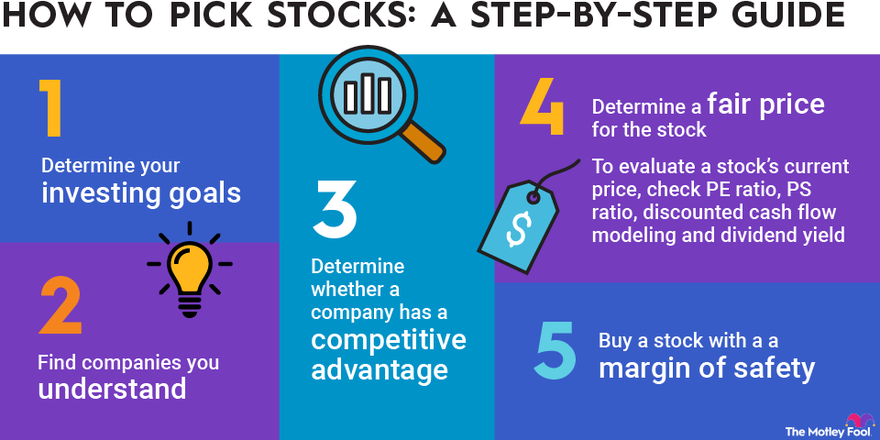So, you’re thinking about diving into the world of stock investing? That’s fantastic! It can seem daunting at first, with endless charts, jargon, and opinions flying around. But don’t worry, it’s more accessible than you might think. Choosing the right companies to invest in is a crucial first step. This guide will help you navigate the process and make informed decisions about where to put your money. Let’s break down how to find companies that align with your investment goals and risk tolerance.
Understanding Your Investment Goals Before Choosing Stocks
Before you even start looking at company names, you need to ask yourself some important questions. What are you hoping to achieve with your investments? Are you saving for retirement, a down payment on a house, or something else entirely? Your goals will heavily influence the types of stocks you should consider. Knowing your time horizon and risk tolerance is also key. Are you comfortable with the possibility of losing some money in exchange for potentially higher returns, or do you prefer a more conservative approach?
Defining Your Risk Tolerance for Stock Investments
Risk tolerance is a big one. Some people are comfortable with high-risk, high-reward investments, while others prefer to play it safe. Think about how you’d react if your investments suddenly dropped in value. Would you panic and sell, or would you hold on and ride it out? Your answer will help you determine the appropriate level of risk for your portfolio.
Consider these factors when assessing your risk tolerance:
- Age: Younger investors typically have a longer time horizon and can afford to take on more risk.
- Financial Situation: If you have a stable income and significant savings, you may be more comfortable with risk.
- Investment Knowledge: The more you understand about investing, the better equipped you’ll be to handle market fluctuations.
Researching Companies for Potential Stock Investments
Okay, now for the fun part: researching companies! Don’t just pick names you recognize or that are trending on social media. Dig a little deeper and understand the businesses you’re investing in. What do they do? How do they make money? What are their growth prospects?
Analyzing Company Financials Before Investing in Stocks
Financial statements are your friend! Learn how to read a balance sheet, income statement, and cash flow statement. These documents will give you valuable insights into a company’s financial health and performance. Look for things like revenue growth, profitability, debt levels, and cash flow. Are these numbers trending in the right direction?
Here are some key metrics to consider:
- Revenue Growth: Is the company’s revenue increasing over time?
- Profit Margin: How profitable is the company?
- Debt-to-Equity Ratio: How much debt does the company have compared to its equity?
- Price-to-Earnings (P/E) Ratio: How much are investors willing to pay for each dollar of earnings?
Understanding the Industry and Competition Before Investing in Stocks
It’s not enough to just understand the company; you also need to understand the industry it operates in. Is the industry growing or declining? What are the major trends and challenges? Who are the company’s main competitors? How does the company stack up against them?
Diversifying Your Stock Portfolio for Reduced Risk
Don’t put all your eggs in one basket! Diversification is a key principle of investing. By spreading your investments across different companies, industries, and asset classes, you can reduce your overall risk. If one investment performs poorly, the others can help offset the losses.
Choosing Stocks Across Different Sectors for Diversification
Consider investing in companies from different sectors of the economy, such as technology, healthcare, consumer staples, and energy. This will help protect your portfolio from sector-specific risks. For example, if the technology sector takes a hit, your investments in other sectors may help cushion the blow.
Frequently Asked Questions About Investing in Stocks
What is a stock?
A stock represents ownership in a company. When you buy stock, you become a shareholder and are entitled to a portion of the company’s profits and assets.
How do I buy stocks?
You can buy stocks through a brokerage account. There are many online brokers to choose from, offering different features and fees. Research different brokers and choose one that meets your needs.
How much money do I need to start investing in stocks?
You can start investing with as little as a few dollars, thanks to fractional shares. Fractional shares allow you to buy a portion of a share, making it easier to invest in expensive stocks.
What are the risks of investing in stocks?
The main risk of investing in stocks is that you could lose money. Stock prices can fluctuate, and there’s no guarantee that you’ll make a profit. However, over the long term, stocks have historically provided higher returns than other asset classes.
Investing in stocks can be a rewarding experience, but it’s important to do your homework and make informed decisions. Remember to define your goals, assess your risk tolerance, research companies thoroughly, and diversify your portfolio. Don’t be afraid to ask for help from a financial advisor if you need it. The world of investing is constantly evolving, so stay curious and keep learning! Good luck on your investment journey!






